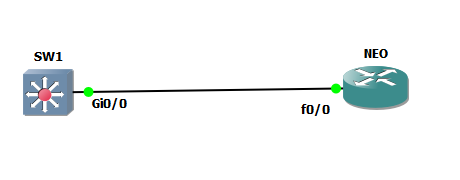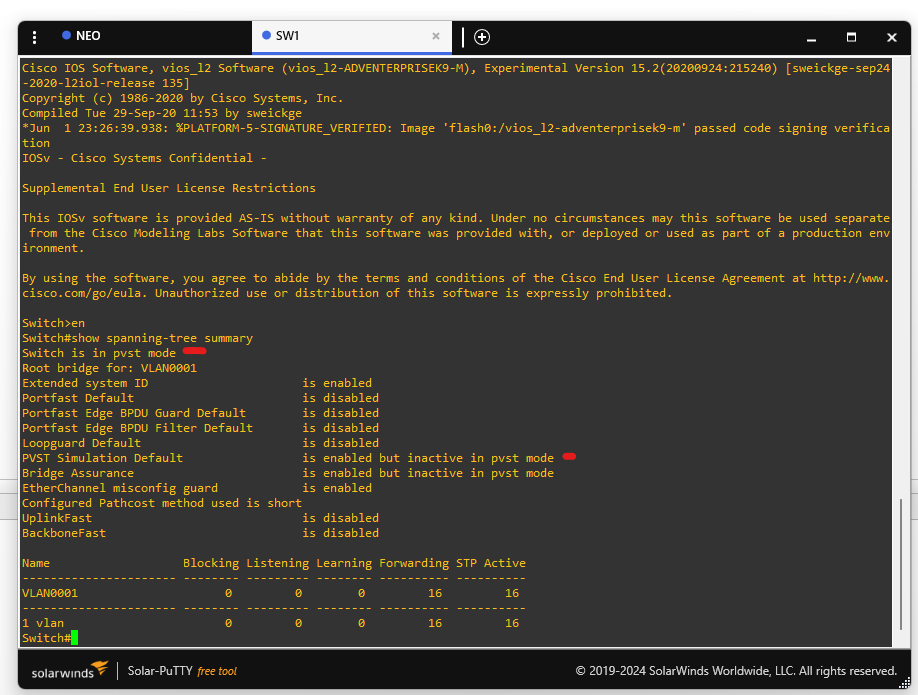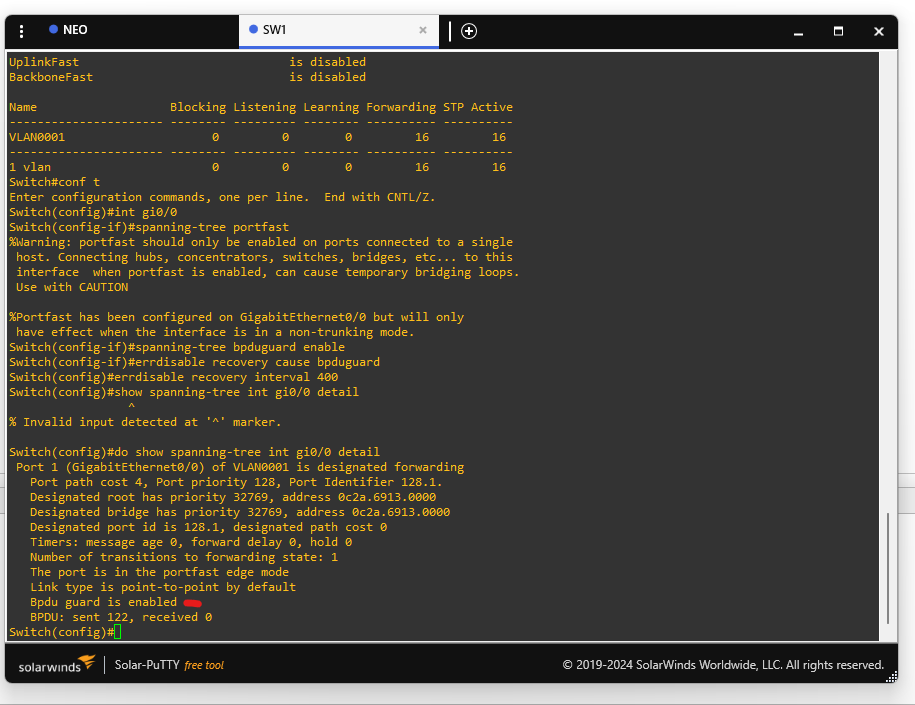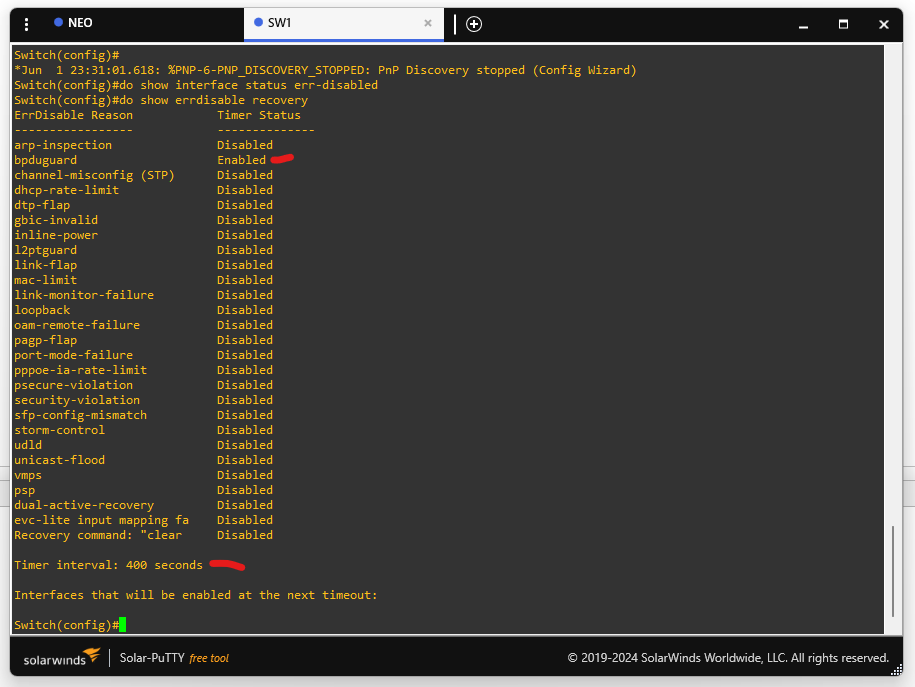TB - GNS3 Lab: Spanning Tree Protocol (STP) with BPDUGuard
by C. Casquatch
Lab from Renee Molenaar

Lab Goals
- Ensure all switches run PVST (default on most Cisco switches).
- Configure BPDU Guard so that if Router Neo (R1) sends a BPDU, the interface on SW1 will be disabled.
- After 400 seconds, the interface should automatically re-enable.
Topology
- SW1 Gi0/0 connected to R1 Fa0/0
Step 1: Confirm PVST is Enabled
PVST is usually the default on Cisco IOS switches.
SW1# show spanning-tree summary
Look for “PVST” or “Per-VLAN” in the output.

Step 2: Configure the Switch Port as a PortFast Edge Port
BPDU Guard only works on PortFast ports (intended for end devices).
SW1(config)# interface GigabitEthernet0/0
SW1(config-if)# spanning-tree portfast
⚠️ Only use PortFast on ports connected to end devices, not other switches.
Step 3: Enable BPDU Guard on the Interface
SW1(config-if)# spanning-tree bpduguard enable

Step 4: Configure Automatic Recovery After 400 Seconds
SW1(config)# errdisable recovery cause bpduguard
SW1(config)# errdisable recovery interval 400
This configuration allows the switch to automatically bring the port back up after 400 seconds if it was shut down due to a BPDU.
Step 5: Verification Commands
Check BPDU Guard status:
SW1# show spanning-tree interface gi0/0 detail

Check if the port was err-disabled:
SW1# show interface status err-disabled
Check recovery configuration:
SW1# show errdisable recovery